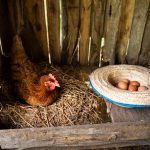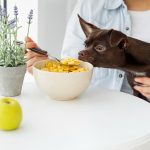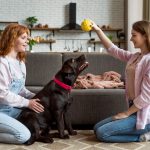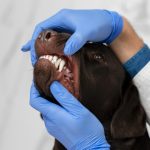Some animals just make you stop scrolling. You see them once, and your brain decides, yes, that’s the dream life right there. For me, that animal is the miniature Highland cow, those shaggy, cinnamon-colored fluffballs with bangs that could rival a rockstar’s. They’re like the countryside’s version of a teddy bear, except alive and far cuter.
I didn’t expect to care about farm animals, honestly. But once you see one trotting through green hills with that slow, unbothered confidence, it’s over. You’re hooked.Let’s talk about why this pint-sized Scottish wonder has taken over the internet and maybe even people’s hearts.
The Roots: Straight Out of the Scottish Highlands
The Highland cow isn’t new. These cows have been grazing in Scotland’s rugged terrain for centuries. Their thick double coats are designed for brutal weather, their horns wide enough to command respect, and their temperament surprisingly calm.
The miniature Highland cow is basically that same majestic breed, just scaled down. They are selectively bred to be smaller, friendlier, and easier to handle. The keyword is selectively. There is nothing genetically modified or artificial about them, just generations of careful breeding focused on size, personality, and looks.
The result is a perfectly tiny version of a rugged Scottish icon.
The Look Everyone Falls For
Let’s be honest. The main reason we are all obsessed is the look.
That long fringe, or “dossan” as the Scots call it, gives them a moody, mysterious charm, like they just walked off a photoshoot. Their coat can range from golden ginger to deep chestnut, even black or white. And those soft, almost smiling eyes peek out from behind the hair like they know they are photogenic.
They are ridiculously cute.
You know that moment when a puppy locks eyes with you and you feel your insides melt? Mini Highland cows do that, too, except they weigh about 400 pounds. Small compared to the standard Highlander, yes, but still a presence.
Temperament: Calm Souls in Furry Coats
There is something grounding about their energy. These cows don’t rush. They don’t panic. They just exist. Slowly. Gracefully.
They are naturally docile. Farmers often describe them as “dogs in cow suits.” They will follow you around, nuzzle your pockets, or stand perfectly still while you scratch their neck.
Owning one feels like having a massive, fuzzy therapist who doesn’t interrupt when you vent. They radiate calm.
That’s part of their charm. They remind you to slow down.
Why People Are Obsessed
Beyond the looks and personality, there is this growing movement toward reconnecting with nature. People want small-scale farming, self-sufficiency, and peaceful spaces. And the miniature Highland cow fits perfectly into that narrative.
They are low-maintenance for a cow. They eat mostly grass, don’t demand fancy shelter, and adapt well to various climates.
Plus, they are Instagram gold. Let’s be honest, half their fame comes from social media. One photo of a Highland calf standing in snow, fringe swaying in the wind, goes viral within hours.
You know what I mean.
Miniature Highland Cow vs. Regular Highland Cow
| Feature | Miniature | Standard |
| Average height | 36–42 inches | 48–60 inches |
| Weight | 350–600 lbs | 1,000–1,500 lbs |
| Personality | Extremely docile | Docile but stronger |
| Maintenance | Easier | Requires more space |
| Ideal for | Hobby farms, small homesteads | Larger farms |
So yes, they are smaller, but the spirit is the same. Tough, friendly, and beautiful.It is like having the heart of Scotland living in your backyard, just more portable.
The Internet’s Role in the Craze
Social media practically crowned them the mascots of “slow living.” Between aesthetic farm TikToks and cottage-core Instagram reels, the miniature Highland cow has become the face of gentle life.
They are in cozy barn videos, in influencer Christmas shoots, in “living my dream homestead” reels. They have become what Labradoodles were to suburban families in the 2000s, the status pet of the pastoral generation.
Except this one eats hay and needs a pasture.Still, there is an emotional comfort to it. Watching one trot through morning fog does something soothing to your brain, like therapy, but with horns.
Are They Good Pets?
Let’s set expectations straight. They are not “pets” in the traditional sense. They are livestock, even if adorable ones. But with the right setup, land, fencing, and care routine, they can be affectionate companions.
Mini Highland cows bond with their owners. They learn routines, respond to feeding times, and even come when called, if food is involved. They are intelligent animals, not mindless grazers.
Still, don’t expect them to live inside your house. I’ve seen people try to make viral videos of baby Highlands on couches. Cute? Sure. Sustainable? Not even close.
How Much Space Do You Really Need?
A small pasture of about an acre per cow usually works, depending on grass quality. These cows are grazers first, charmers second. They need open space to roam and forage.If you don’t have land, this isn’t your animal.
That said, they adapt well to various environments. From the American Midwest to Australia’s dry plains, they thrive wherever grass grows and stress doesn’t.
Their thick coats handle both heat and cold better than you’d expect. In summer, they shed. In winter, they fluff up like walking carpets. Nature’s insulation system.
Nutrition and Care Basics
They are easy to feed; grass, hay, and clean water are enough.
Breeding stock and calves may need more balanced nutrition, especially if the goal is maintaining small stature without sacrificing health. But generally, they are forgiving animals.
Routine vet care and grooming matter. That thick coat can tangle if ignored.Brush them. It’s bonding, and it keeps them camera-ready.
Ethical Breeding and Buyer Caution
The growing demand has, unfortunately, attracted questionable breeders. Some sell crossbreeds as “mini Highland cows” when they are not genuine.
Real miniature Highland cows result from decades of downsizing through selective breeding, not from crossbreeding with smaller species.
If you are considering getting one, do the research. Visit farms. Meet the animals. Ethical breeders care deeply about lineage and temperament, not just sales.
The Emotional Pull Why We Love Them So Much
Let’s talk heart, not horns.Part of their appeal is emotional nostalgia. These cows feel like something out of a dream we all half-remember: simpler times, clean air, days measured by sunlight instead of screens.Owning or even seeing one feels like reclaiming peace.
They are living reminders of patience. They move slowly, eat slowly, exist slowly. And in a world obsessed with instant everything, that feels revolutionary.There’s a metaphor in that somewhere. Maybe we all just want to be a little more Highland cow inside.
Economic Side: The Luxury of Livestock
Let’s not pretend they are cheap. Miniature Highland cows can cost anywhere between $3,000 and $10,000, depending on pedigree, color, and horn shape.It is the boutique farming movement, fewer animals, more personality, more emotional value.
You are not just buying livestock. You are buying charm, character, and cultural heritage in a furry package.And people are willing to pay for that.
Cultural Symbol and Internet Celebrity
In Scotland, the Highland cow or “Heilan Coo” has always been a national treasure. Tourists line up for selfies with them. Now, the miniature Highland cow is exporting that same charm worldwide.
It is not just an animal; it is an ambassador. A piece of rural Scotland wandering into suburban America and beyond.
From kids’ books to coffee mugs, from TikTok to luxury farms, it has become a brand. Unintentionally, but powerfully.
A Few Honest Downsides
No fair article skips the cons.
- They are still cows, meaning they poop. A lot.
- Vet bills add up. Livestock care is never cheap.
- You can’t just own one. They are herd animals; they need company.
- Transporting them isn’t easy.
- They live long, sometimes up to 20 years. Commitment matters.
If all that doesn’t scare you, maybe you are the right kind of owner.
My Take
Every time I see a miniature Highland cow, I feel an odd mix of admiration and envy. Admiration because they embody calm resilience. I envy them because they seem completely content, something most of us struggle with.
They remind me that beauty doesn’t need to shout, and peace doesn’t need to hurry.It is strange that an animal from the misty Scottish Highlands has become a modern-day symbol of mindfulness, but here we are.
Frequently Asked Questions
1. How big does a miniature Highland cow actually get?
Adults usually stand around 36 to 42 inches tall at the shoulder, much smaller than standard Highlands.
2. Do miniature Highland cows make good family animals?
Yes, as long as there’s enough land and care. They are gentle, especially when raised around people.
3. What’s the average lifespan of a miniature Highland cow?
Typically between 15 and 20 years, depending on diet and environment.
4. Can they live in hot climates?
Surprisingly yes. They adapt well, provided they have shade and water during peak heat.
5. Are miniature Highland cows purebred?
Authentic ones are pure Highland lineage, selectively bred for smaller size, no outside species mixed in.










